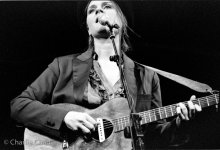Tom A
RFF Sponsor
Earlier this spring I did a series of informal 'tests" with Neopan 1600 - rated at 1000-1200 in Rodinal stand development. Apart from a "standard" 60 min run, I did additional tests and added Sodium Sulphite to the Rodinal 1:100 mix (2%, 4%, 8% and 10 %) to soften the grain. Not a huge difference. I did cut the times too (45min,35 min,30min,25min). Best result was at about 35 min. and 10% Sodium Sulphite added.
I also tried the opposite, Rodinal 1:100 and constant agitation. Grain was a bit (but only a bit) more aggressive and tones held up fine.
Check Flickr on our site "Rodinal Stand development " for some samples ( about 200 in all).
I also tried the opposite, Rodinal 1:100 and constant agitation. Grain was a bit (but only a bit) more aggressive and tones held up fine.
Check Flickr on our site "Rodinal Stand development " for some samples ( about 200 in all).
Last edited:









